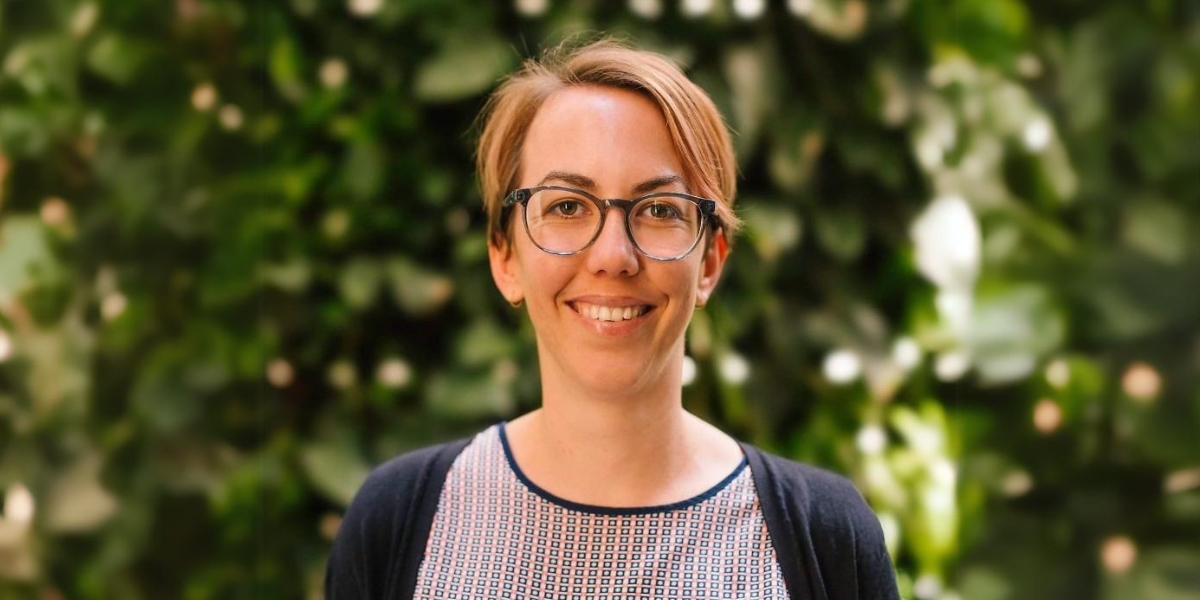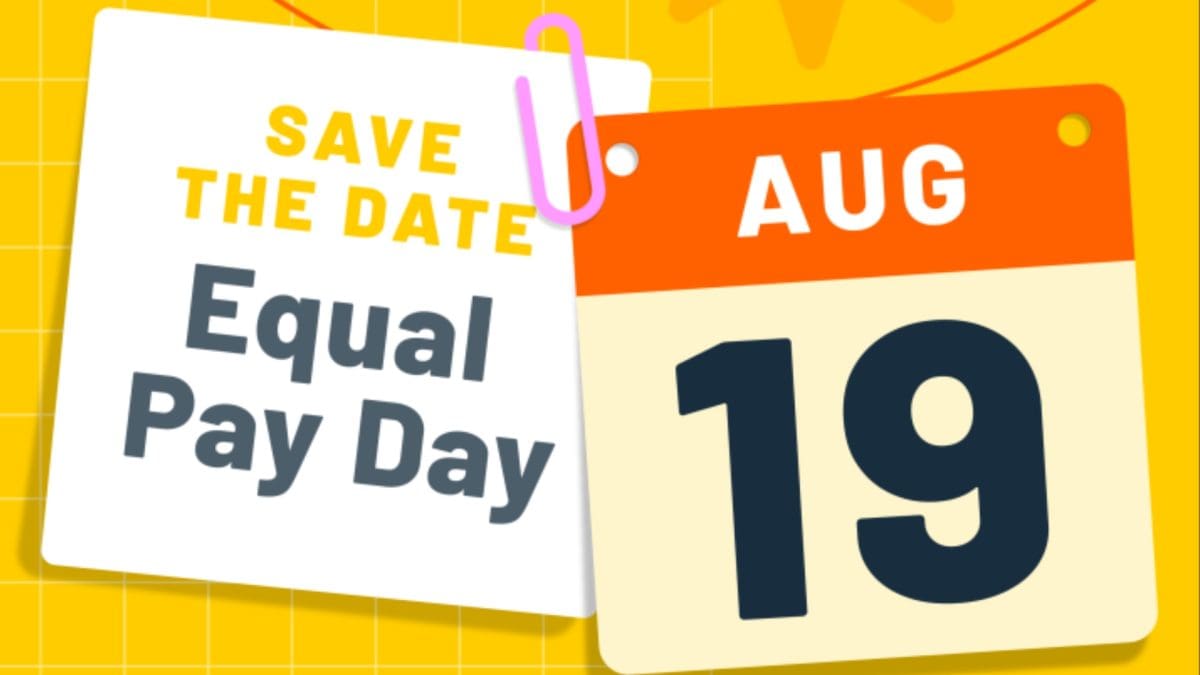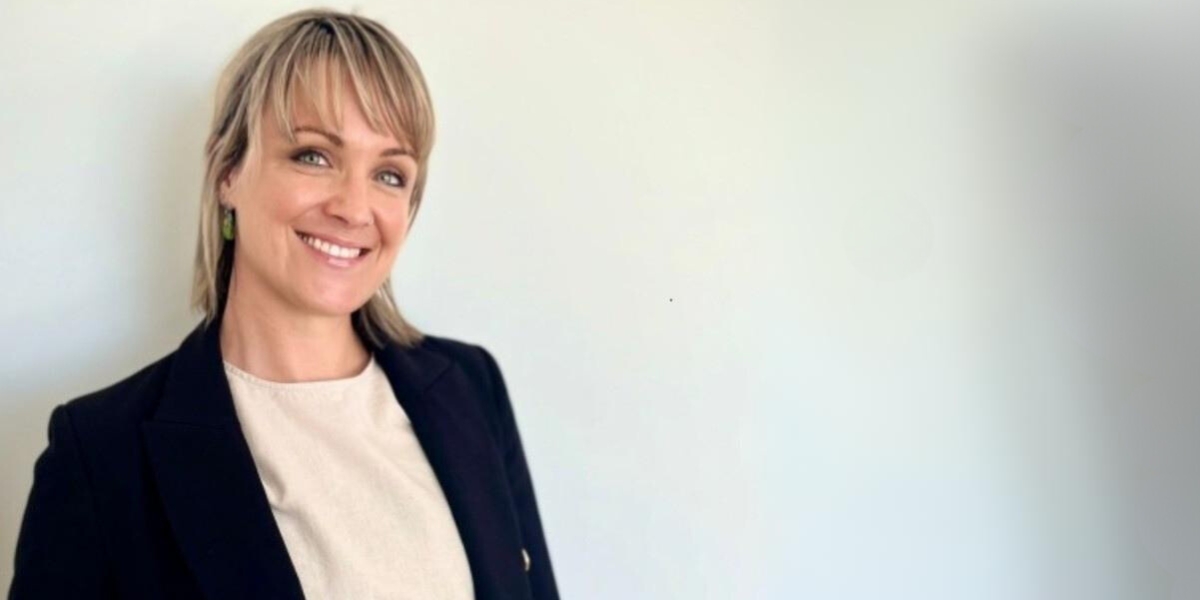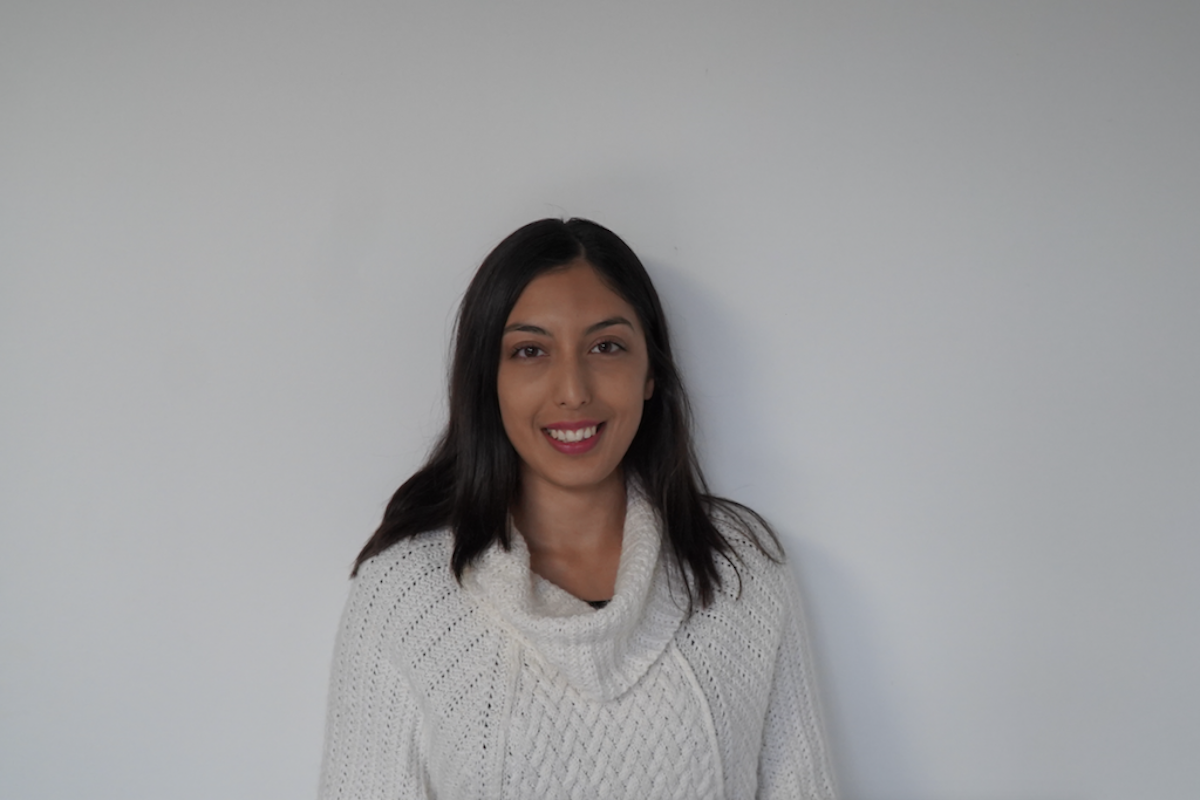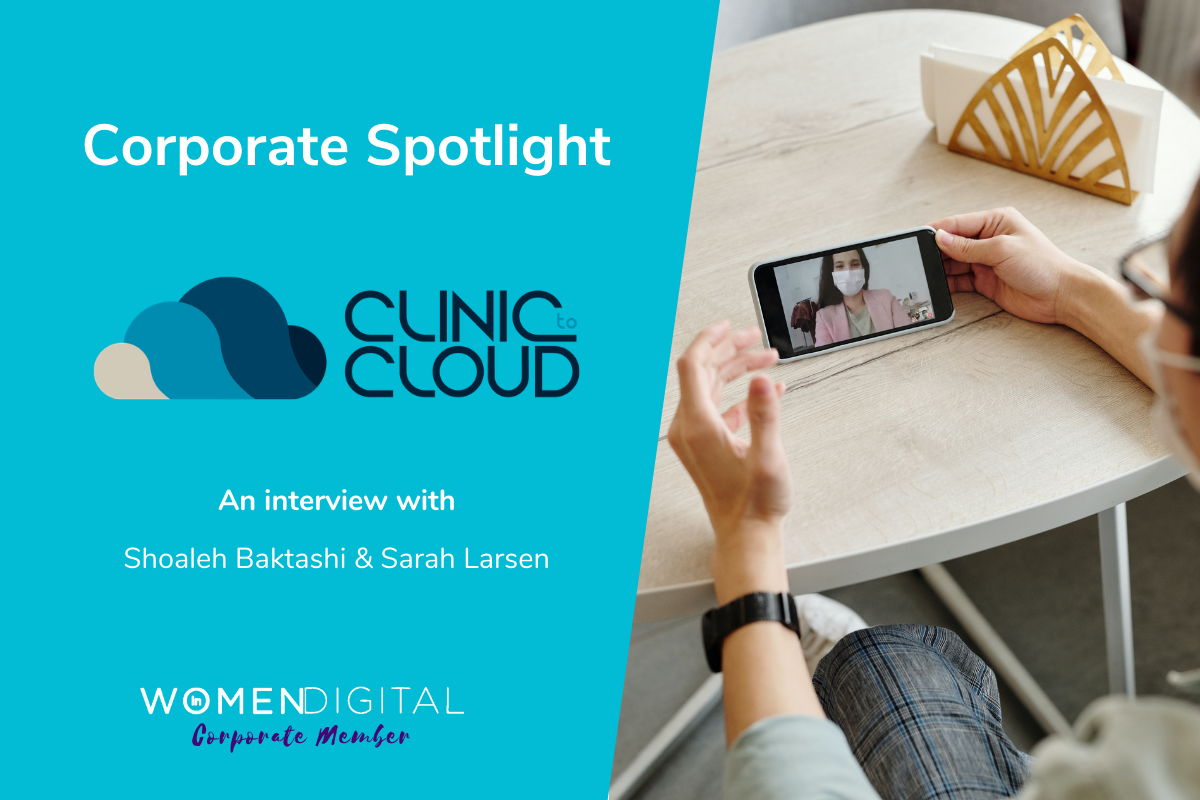Designed for today’s in-demand health professional, Clinic to Cloud is an award-winning medical practice management platform revolutionising the telehealth industry with their next-generation technology. Passionate about health innovation, they also recognise and are dedicated to diversity in tech as a means to fuel innovation!
As a proud Women in Digital Corporate Member and 2020 sponsor for the Women in Digital Awards Innovator of the Year category, Clinic to Cloud are committed to growing their best and brightest talent and we are thrilled to have the opportunity to showcase their incredible female leaders.
Interested in reading more about Clinic to Cloud’s involvement in the 2020 Women in Digital Awards? They wrote an article about it here!
But back to the Q&A… let’s get into it! Introducing our two featured Clinic to Cloud leaders…
 Sarah Larsen – State Lead (QLD/NT)
Sarah Larsen – State Lead (QLD/NT)
 Shoaleh Baktashi – Senior UX Designer
Shoaleh Baktashi – Senior UX Designer
Welcome! So tell us, how would you personally describe Clinic to Cloud?
Sarah: Continually evolving. The platform is updated with a velocity that I’ve not witnessed in any other SAAS company. Our team is constantly growing as do our learnings and knowledge. Ideas for improvement and pushing the boundaries are not left in the realm of thinking for the small group of people in upper management. The team as a whole are encouraged to dedicate time to thinking about what we can do better, how can we make the patient experience better and the customer experience better?
Shoaleh: Clinic to Cloud (C2C) is a thriving environment where we constantly review our qualities as an organisation to ensure we are effective in the outcomes we produce. Our success derives from a collective mindset, which takes a lifetime to develop and it comes from individual life experiences.
We constantly think about how we can design a healthier future for our people internally as well as the people who use our software to solve their problems on a daily basis. Our purpose at Clinic to Cloud is about how we can become better human beings and how the human qualities we cultivate will improve healthcare and quality of life for the people who use Clinic to Cloud in their lives on a daily basis. It is our purpose and mindset that gives us as an organisation the competitive advantage we have which will also lead us into the future.
What is one thing not many people know about Clinic to Cloud?
Sarah: How diverse our customers are! We support the small, sole clinician practices and then the large multi-disciplinary practices as well. All on the same platform, all with their own experience. Each and every customer who chooses to join us is celebrated, regardless of how large or how small their clinic may be.
Shoaleh: Change is inevitable at all levels at Clinic to Cloud. There has not been a month that I didn’t feel part of a change. It’s very challenging to deliver on quality when happiness and experience are at the core of our mission whether for customers or employees.
Talk to us about your early days/onboarding with Clinic to Cloud. What is the one thing that still really sticks out for you?
Sarah: Our Founder and CEO, Rafic Habib, really cares about people. His attitude and behaviour with regard to the team and our customers has been adopted company-wide and is reflected daily in the way the teams work together, the way we work with our customers and the way that we plan our future roadmap – it’s all about improving the experience for the patient. It was, and still is, okay to put your hand up and say you don’t know the answer to something and this often leads to some fantastic opportunities to collaborate.
Shoaleh: Considering the business to be a start-up at the time, the employee on-boarding was not yet established and I didn’t come from a healthcare background. So I remember thinking to myself, how do I get my head around all this in such a fast paced environment? The impact and consequences of our products are high as it manages patient information.
I had this notion that surgeons or doctors, practitioners or practice managers are time poor (and they really are) but soon I learned that they are such generous individuals. I don’t recall ever being rejected for any interviews, or site-visits. These practitioners made themselves always available to the product team, and their passion was infectious. Even if they were unhappy, they still made the time for us to listen to their problems and it is because of them that Clinic to Cloud makes the changes needed to make a difference in their lives.
Obviously diversity in digital is important to Clinic to Cloud but what is your personal definition of diversity and why do you think it is important?
Sarah: Without diversity, life would be very boring. There are the obvious diversities – gender, culture etc. However, I find individual diversity the most exciting. What is it that makes people tick? We all have such diverse passions and pursuits and I love watching people light up when they speak about theirs. It’s a great opportunity to learn and share and you never know where those learnings will take you.
Shoaleh: Diversity to me is where people with all different skills, ages, idealism, opinions, backgrounds, and personalities can feel connected and at ease without any judgement. It is important for individuals who contribute to a bigger mission to feel they can be themselves, contribute respectfully and be included to the greater mission that as employees we have all signed up to achieve. I also think it’s important to have diversity because it is, to my opinion, the driver of innovation and human learning.
How would you describe your current thinking about diversity, and how has your thinking changed over time?
Sarah: I used to think that to be successful, you needed to fit in and mirror those around you- it was not a good thing to be different to the rest of the team. This thought pattern has changed significantly since I started my journey with Clinic to Cloud. Being a part of the team at Clinic to Cloud means that your individuality is not something to hide – it is recognised and celebrated. We are not expected to fit the same cookie-cutter mould and this enables us to be more authentic which builds a greater level of trust and loyalty.
Shoaleh: I would describe diversity as when we all can digest the five human senses in a way that would have a positive outcome. What we see, what we hear, what we say, what we touch, and what we smell are the DNA for how we perceive things and behave. If we can accept and manage all that in an environment, then we are truly diverse in how we are as humans. My thinking has changed over time as I used to think diversity was about being inclusive of different cultures, but now it’s about human interactions.
What does it mean to Clinic to Cloud to have a commitment to diversity?
Shoaleh: To be inclusive and create an environment where we can support people with different capabilities visible and invisible. Support our community, employees and customers and treat everyone equally. It also means cultivating a culture of transparency, wellbeing and great minds that can be the building blocks of diversity.
How do you think Clinic to Cloud is demonstrating that commitment?
Shoaleh: This is not a tick box exercise and it is something that needs to be created from the top to the bottom and it takes time. However, the changes we have done as a company in the last 12 months is creating the path for that commitment. Although we are taking barriers down, we have no hierarchical structure. No matter where you are positioned in the company or who you are and what you do, you can reach out to anyone, including the CEO for feedback and collaboration. The floor is open for all. We encourage transparency and collaboration to solve problems and that goes across the entire ecosystem. I feel like Clinic to Cloud is about inclusion and at the same time hiring the right people for the job.
What is Clinic to Cloud doing to help increase the number of women in the workplace?
Sarah: The Health Tech space is a small arena to be playing in. When searching for the next team member, Clinic to Cloud does not keep the search fields narrow to a small selection criteria. We have a number of staff with very non-traditional career pathways who work at Clinic to Cloud, myself included. Where a candidate has some great qualities but not necessarily a background in health or tech they are not overlooked. We have a fantastic, flexible working environment and families/children are celebrated, they are not something to be hidden for fear of being overlooked. This makes it much easier for women to take a role with Clinic to Cloud and feel secure in that position when life happens.
Something that really stands out about Clinic to Cloud is their approach to diversity. It isn’t just about building a diverse team but with patients being at the centre of everything you do, it is also about improving the experience and care for patients.
Is there an example or project that stands out to you that exemplifies this?
Sarah: This is true, and is also something that is not really known about Clinic to Cloud. It is wonderful to watch people sit back and think about that fact when we are speaking to them about our purpose and why we do what we do. Nobody chooses to be sick and if we can improve the patient experience by enabling a medical practice to focus more on their patient and not on their software, we are doing a good job.
Our Patient Portal is the perfect example of our commitment to improving the patient journey. One of my favourite patient stories to recount is that of Nicole Cooper, which you will find here.
Shoaleh: There are many projects that we are embarking on which will amplify and cover the D&I but one particular long-term project that I’m involved with is the Patient Portal. Patient Portal is a web portal designed specifically for patients’ needs. It will provide a broader range of access to all patients of all demographics. It makes patients medical information accessible to all communities.
To businesses or leaders that want to improve gender diversity within their team but don’t know where to start…. What advice do you have for them or what have you learned from Clinic To Cloud?
Shoaleh: Be genuine about inclusiveness of your employees and the balance of D&I. Have a good training program for senior leadership or the people who have the hiring power to make them understand what the requirements are, and why we need to do this specially when we are hiring new employees or dealing with customers. And start by supporting and enabling your people first.
From a small-startup to a thriving platform supporting over 7,200 medical professionals and over 3.6 million patients, Clinic to Cloud, is a leading example of a digital innovator disrupting the market, powered by strong, talented and clearly passionate women. Their insights into the value of creating a supportive and balanced workplace that encourages innovation and inclusivity really resonates with us and is why we champion the company as a Women in Digital Corporate Member.
Thank you so much to the women at Clinic to Cloud for chatting to us about these incredibly important topics. We support Clinic to Cloud’s clear commitment to diversity for innovation, diversity in tech and diversity in leadership, and we couldn’t be happier to have the wonderful Shoaleh Baktashi and Sarah Larsen share their insights and stories with us.
If you are interested in learning about Clinic to Cloud and their culture, click here. You can also learn more about Women in Digital’s Corporate Membership here!

